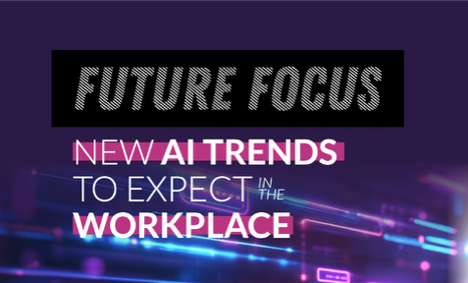BY: Priya Kumar
Artificial intelligence (AI) continues to revolutionize various industries, driving efficiency, innovation, and competitive advantage. As of 2025, the global AI market is valued at approximately $454.12 billion, with projections estimating it could surpass $2.5 trillion by 2032, reflecting a compound annual growth rate of 19%. This article explores the prevailing AI trends across key sectors, highlighting statistical insights and industry
applications.
HEALTHCARE
AI’s integration into healthcare is enhancing diagnostic accuracy, personalizing treatment plans, and streamlining administrative processes. The generative AI market within healthcare is anticipated to reach $2.7 billion in 2025 and nearly $17 billion by 2034. Despite its potential, healthcare lags behind other industries in AI adoption, necessitating a fundamental rethinking of health delivery and access. An everyday AI example in health care may be smart watches or apps that monitor your heart irregularities and then recommend you to see a doctor or an AI analyzing X-rays or MRI’s faster than a radiologist.
RETAIL
Retailers are leveraging AI to enhance customer experiences and optimize supply chains. Walmart’s “Trend-to-Product” AI tool exemplifies this trend by reducing the time to market for new fashion items from six months to six weeks, allowing rapid response to emerging trends. This approach combines trend analysis with efficient design cycles, distinguishing it from traditional fast fashion models. You may have noticed certain prompts such as “Recommended for you” or “People also bought…” which personalizes customer experience.

AI market is valued at approximately $454.12 billion
FINANCE AND PROFESSIONAL SERVICES
In finance, AI is automating tasks, improving risk assessment, and enhancing decision-making. Deloitte’s AI chatbot, PairD, has seen a threefold increase in usage among UK audit staff since its late 2023 launch. Nearly 75% of auditors now use the tool at least monthly, utilizing it for tasks such as summarizing board minutes and extracting contract data. This adoption reflects a broader industry trend toward integrating generative AI tools to support front-line employees.
MANUFACTURING
In manufacturing, AI-powered predictive maintenance systems analyze equipment data to forecast failures before they occur, reducing downtime and maintenance costs. This proactive approach has led to a 20% increase in equipment uptime and a 15% reduction in maintenance expenses. There is an uptick in Robot assembly lines which are drastically reducing costs for car manufactures.
As AI continues to evolve, its integration across industries is reshaping operational landscapes and competitive dynamics. Organizations that strategically adopt and implement AI technologies are poised to gain substantial advantages in efficiency, innovation, and market positioning. The future is here. It may replace several jobs, but it’ll also create innovative opportunities.
Priya Kumar is a Financial Strategist, educating and empowering women business owners on creating thriving businesses and partners with non-profits to bring financial literacy to underserved communities to rebuild and create opportunities.


